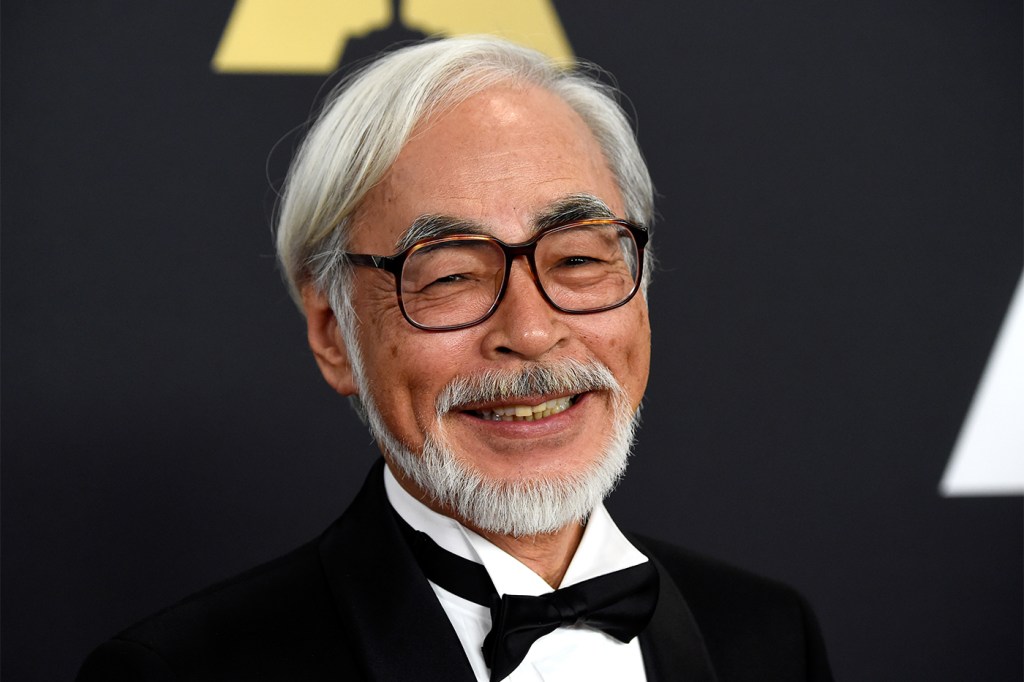Do movies need trailers? What Studio Ghibli releasing animation legend Hayao Miyazaki’s last film with zero marketing can teach us

Studio Ghibli, the acclaimed Japanese animation studio behind “Spirited Away,” “Princess Mononoke” and “My Neighbor Totoro,” is releasing animation legend Hayao Miyazaki’s final film, “How Do You Live?” this week in Japan, but you’d be forgiven for not knowing that.
Studio Ghibli has chosen an unorthodox marketing strategy: no marketing at all. There will be no trailer, plot summary, cast list or promotional materials, other than a poster that has already been released. Unless audiences have read the 1937 novel that the film is very loosely based on, they will go into the theater cold.
The strategy, which is very in line with Studio Ghibli’s closely controlled approach to merchandising and marketing, flies in the face of modern movie marketing. Studios want audiences to know what they’re in for to guarantee that they’ll come out to see movies with budgets well above $100 million. Studios will sometimes release upward of three trailers for a movie. But moviegoers––and even the people behind the movies themselves––have become critical of trailers and how they can “spoil” a movie before it has even hit theaters.
It’s why Studio Ghibli’s strategy just might work, says Yakov Bart, an associate professor of marketing at Northeastern University.
“Whether we’re talking about a movie or a video game, when the consumer already knows something about the movie or video game in advance, that may potentially affect the perception of the whole product,” Bart says. “In an ideal world, nobody would use movie trailers.”
Toshio Suzuki, Studio Ghibli’s longtime producer who co-founded the studio with Miyazaki, has been vocal about avoiding the kind of overexposure that can come with movie trailers. Talking about this anti-marketing campaign with the Hollywood Reporter, Suzukis said, “Deep down, I think this is what moviegoers latently desire.”
Bart acknowledges that this is a unique scenario. Entertainment is one of the few industries where telling consumers less can actually improve their experience. Studio Ghibli and Miyazaki also have so much cultural cachet that their names are essentially enough for fans to go out to the theater. Add to that the idea that “How Do You Live?” is supposedly Miyazaki’s last film, and there is potentially a unique recipe for success, Bart says.
“In [this] case, they really don’t need to know anything more than the fact that Hayao Miyazaki directed a movie,” Bart says. “This unique combination of a strong brand––Hayao Miyazaki––and the nature of a product where communicating additional information may only hurt a potential impression of consuming the product could work.”
At least that’s what Ghibli is hoping for, even if Miyazaki himself has expressed some doubts about the strategy.
Rei Inouye, a teaching professor of Japanese at Northeastern, says Miyazaki’s legacy as “one of the pioneers” of anime shouldn’t be underestimated. Miyazaki directed Studio Ghibli’s first film, “Nausicaä of the Valley of the Wind,” in 1984, and ever since his work––and the studio’s work––has become synonymous with artfully animated, obsessively detailed, thematically mature films that can captivate viewers of any age.
“The artistic quality of his animation and also the content, the message that he conveyed through his animation, it’s the combination of that––nothing was comparable,” Inouye says.
His films have often returned to specific yet universal themes over the years––environmentalism, feminism and anti-war sentiments––which have helped them cross over to a global audience. His emphasis on making young girls into protagonists from the outset of his career has also paved the way for future generations of animators.
Inouye says the influence of Miyazaki’s work with Studio Ghibli can be seen throughout the world of anime and animation more broadly: “It’s inevitable,” she says.
At the same time, Miyazaki’s obsessive focus on quality over quantity and feature films marks him as an outlier in the anime industry, which is dominated by a constant churn of quickly produced television shows.
“So much of Japanese popular culture is really commercial and really commodified, so [Studio Ghibli] is kind of a bright, shining light in Japanese popular culture because they’re both commercially successful––so they reach a broad audience––but they also have their own vision and a real focus on sending good messages to youth,” says Jennifer Cullen, a Japanese pop culture and film lecturer at Northeastern. “They are a standout without being niche.”
In that sense, Studio Ghibli is using Miyazaki’s impressive legacy––and its conclusion––as marketing.
The artistic quality of his animation and also the content, the message that he conveyed through his animation, it’s the combination of that––nothing was comparable.
Rei Inouye, a teaching professor of Japanese at Northeastern
“Anytime you say the brand goes out of business, so to speak, that increases demand for the product because it’s basically the last chance to see a product associated with its cultural brand,” Bart says.
But is that legacy enough to make Studio Ghibli’s no-marketing marketing campaign work? Bart says it’s hard to tell––it’s a stars-aligned level scenario for “How Do You Live?” But if it’s successful, it could reveal some of the fault lines in the ways studios market movies.
“I think the practice of showing movie trailers … is not going to go away, but we may see certain directors with already well-established cultural ground potentially following this type of release without doing any trailers or without sharing much information about it in advance,” Bart says.
Cody Mello-Klein is a Northeastern Global News reporter. Email him at c.mello-klein@northeastern.edu. Follow him on Twitter @Proelectioneer.





